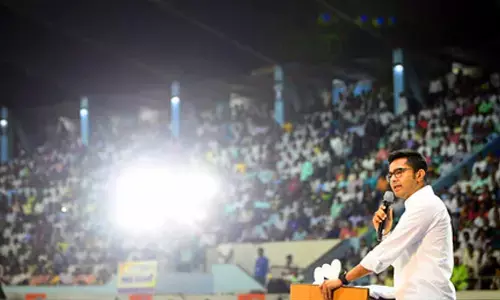Creating a nation through affordable housing

The Modi government in June 2015 committed to a grandiose vision of "Housing for All" by 2022, the 75th year of India's independence.
The Modi government in June 2015 committed to a grandiose vision of "Housing for All" by 2022, the 75th year of India's independence.
With a view to provide a concrete shape to this vision, the government rolled out the "Pradhan Mantri Awas Yojana" (PMAY).
The scheme aimed at boosting affordable housing by providing credit-linked subsidy to construct around 2.95 crore houses in rural areas and 1.2 crore houses in urban areas.
The affordable housing model envisages a self-contained brick and cement habitat with access to water, electricity and sanitation facilities.
Importance of affordable housing
Access to affordable homes should be a fundamental, undeniable right of every citizen, especially from the low income strata of society.
A roof over the head with basic amenities contributes to the economic and social well-being of individuals and families.
It is key to providing people a heightened sense of safety and security. It also plays a pivotal role in the economic revitalization of communities.
A decent, affordable home also remains vital to reducing stress and boosting physical and mental health of people.
When families and communities have access to decent, affordable abodes, they have increased income at their disposal which enhances their purchase power, allowing for a higher spend on quality healthcare and food.
A rise in income levels enables families to make long-term investment plans, create retirement corpuses and be assured of future sustainability and survival.
Access to quality education also forms a key takeaway for children from economically deprived communities.
With a roof to call their own in the form of a steady and decent affordable home, instances of children experiencing disruption in the pursuance of education reduces significantly.
It also has the potential to considerably improve the academic performance of children with a marked improvement in their attendance and reduction in dropout rates.
Boosting affordable housing initiatives
The government will have to initiate key policy interventions and suitable measures in the form of financial and non-financial support to boost the affordable housing segment in the country.
Financial subsidies and cross subsidies by the government will play a critical role in bringing large sections of India's economically deprived populations within the gambit of affordable housing.
Concerned government departments will need to increasingly use private land for building affordable houses on a mass level with the provisioning of suitable Floor Space Index and Transfer Development Rights for builders and developers for building high-end housing stocks.
The PPPP strategy can also include the allocation of government grants and subsidies for unlocking underutilized and unutilized land parcels owned by government departments and private parties.
A key role in bolstering the scope and scale of the affordable housing market will involve increased access to institutional finance and capital markets to private developers and builders.
The government will have to roll-out suitable initiatives to provide working loans to builders on easy repayment terms to speed up affordable housing projects.
Issuance of building permits and awarding of contracts will need to be streamlined and expedited with a specific onus on reduced red-tape and lower scope of bureaucratic delays.
It goes without saying here that a proper checks and balances system should be instituted and proper project audits should be undertaken at every stage of project cycles to ensure a successful outcome for the projects.
Owner-driven construction and housing support services
Homeowner driven construction requires handholding and structured support in the form of Housing Support Services.
Under housing support services homeowners can not only build new homes but also can complete their homes which were unfinished for several years.
This will help families to keep the construction cost to a minimum while keeping the home design simple yet aesthetic.
The housing support services also enable the families to align the expenses with estimates. The families are able to claim the subsidy as per the cash-flow and planned construction schedule.
This approach will eliminate over -- engineering and under-engineering.
The Housing Support Services is a tool, which can empower the homeowners with technical knowledge and financial literacy ensuring them to have a decent shelter they can call their home.
Rajan Samuel (The writer is the Managing Director of Habitat for Humanity India. The views expressed are personal)















